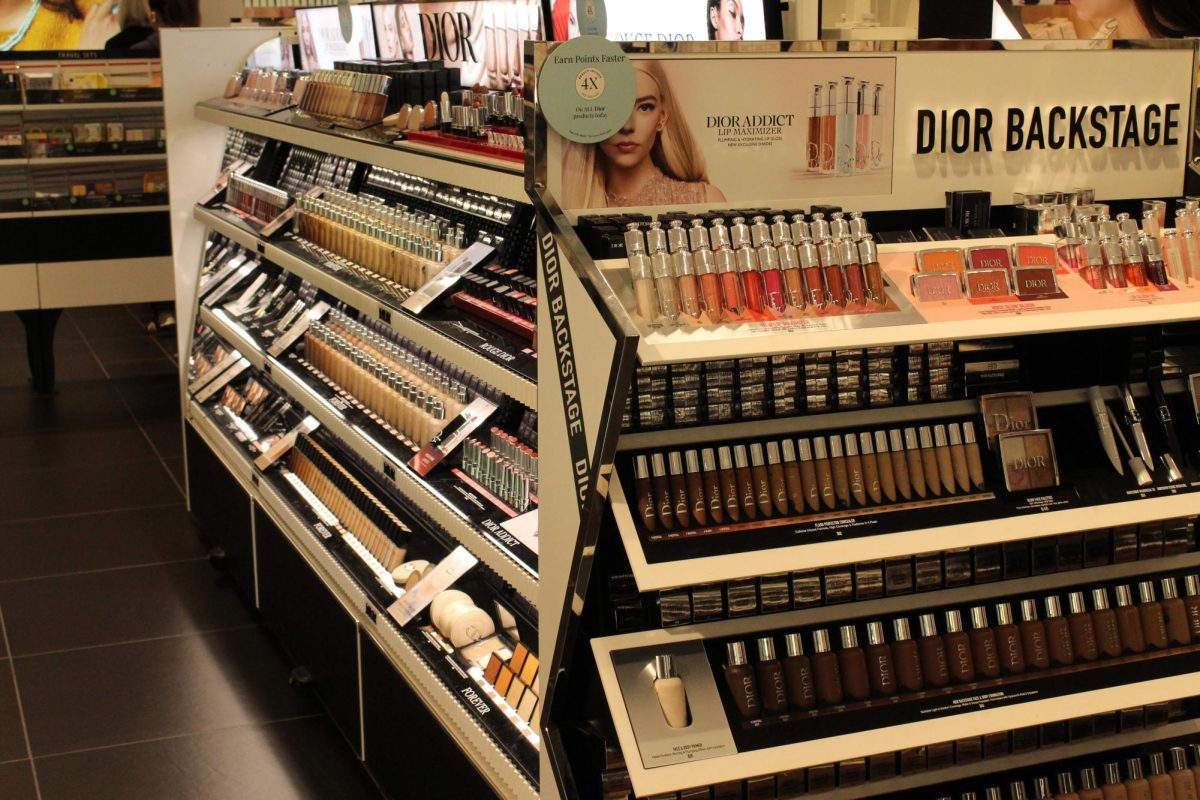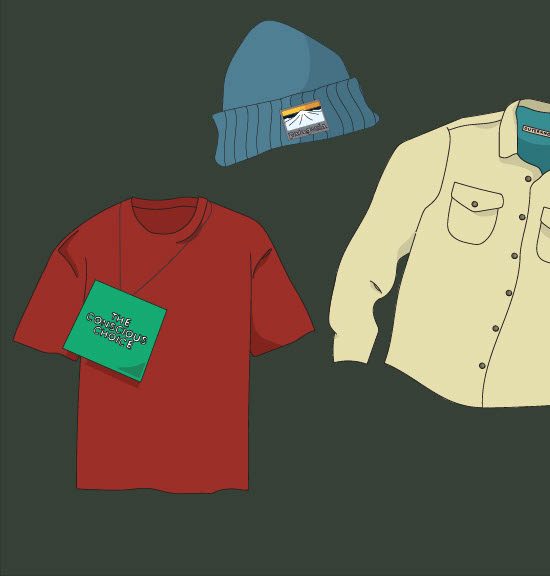Bows, lace and Dior makeup products have taken over the social media feeds of many teenage girls, and all are cornerstones of the recent “coquette” trend. The rise of the coquette trend has reverberated into mainstream brands, with many releasing clothing items that align with ballet-core or feminine aesthetics. The trend’s popularity is also shown by the expansion of the Dior section in Bellevue Square’s Sephora: what used to take up half an aisle now takes up the whole aisle. What keeps the coquette trend popular is its feminist dimension; its followers are not only shopping, but also exploring their relationship with femininity.
Beyond its aesthetics, the coquette trend has hooked social media users with its claim that embracing femininity supports women’s agency. Influencers promoting the trend offer it as a method of operating outside of, or despite, the male gaze. The male gaze refers to a power structure in patriarchal society where the perspective of heterosexual men embodies the audience for film and media. When women grow up with these images, they may internalize male expectations. Social media content about the coquette trend tells a story of transforming internalized misogyny into the reclamation of feminine traits, with social media influencers referencing phases of “hating pink” and not wanting to be seen as a “girly-girl” as attitudes that the coquette trend helped them outgrow.
For all its interpretations and all its controversy, the most stinging aspect of this trend is how it forces young women to face their dilemma: that they cannot escape the patriarchy. When accepted as a genuine method of escaping the patriarchy, it proves futile, but when explored further, it raises questions of how to deal with internalized misogyny and how to negotiate freedom under a patriarchal social structure.
The method of escape from the patriarchy that the coquette trend offers is oversimplified because it forgets that sexism precedes gender, and that cultural trends cannot exist in a vacuum; they are inseparable from their context. “Sexism precedes gender,” similar to American author Ta-Nehisi Coates’ theory “racism precedes race,” is the claim that the desire to create social order preceded modern perceptions about natural differences between men and women. People are assigned binary genders because of the systemic oppression that fabricates a patriarchal society. Since this sexist social organization informs definitions of gender, the coquette trend is still a product of the gender binary.
The claim that women’s aesthetic preferences can exist outside of the male gaze is a futile attempt to remove the coquette trend from its cultural context. The oversimplified message that women can foster positive attitudes about femininity simply by wearing makeup and pink implies that it is possible to separate this cultural trend from its entanglement with the male gaze and patriarchy.
Despite its inevitable connection to the patriarchy, for many of its followers, the coquette trend is a method of reclaiming control over self-image and identity. The term “doublethink,” coined by George Orwell in his novel “1984,” describes this line of thought. Doublethink is a person’s ability to simultaneously believe two completely contradictory truths. The coquette trend is laced with doublethink because of its emphasis on consumerism. Buying luxury makeup at Sephora, tiny clothes at Brandy Melville and perfumes, room decor and stationery that align with the coquette trend supports the industries that perpetuate the gender binary. Remarkably, the coquette trend has managed to claim that buying makeup is a method of resisting misogyny. Makeup holds different meanings for many people, but a major underlying message is that women must change themselves to be respected. Here, the duplicity composing the coquette trend’s doublethink is exposed: young women are led to believe they are resisting misogynist social structure while also being aware they are supporting it. Even if women participate as a genuine method of resisting the patriarchy, the coquette trend is futile and simply upholds the sexist order of American society.
However, many young women are aware of this complexity; it is even part of the trend’s allure. The coquette trend overtly aligns with the gender binary and is a method through which young women may attempt to understand and articulate its entangled misogyny. This contrasts more covert sexism, which can be more frustrating to understand.
In the language of Aldous Huxley, the coquette trend serves as a “violent passion surrogate,” or an outlet for this frustration. In Huxley’s 1932 novel “Brave New World,” a tyrannical state recognizes its citizens’ need to feel every emotion as an essential aspect of maintaining state control, so the state requires the novel’s characters to watch movies depicting situations of intense emotion. Since intense feelings, or “violent passion,” are channeled towards these films, they are not directed at the tyrannous state. The movies successfully served as surrogates for real conflict with the ruling class.
For its followers who dare investigate its deeper role in the feminist movement, the coquette trend can be its own kind of violent passion surrogate. It safely enables its followers to act out the covert but immensely harmful misogynist messages battering young women.
Devotees who realize the complexity of the coquette trend are knowingly experimenting with how to reckon with the gender binary’s prescriptions on how to be human. To understand the subtle misogyny that teases them, young women may use the process of adopting traditional gender aesthetics to construct a microcosm of the patriarchy. They use their personal style as a stage where the major elements of the patriarchy conversate. The male audience, young women’s questions of identity, the strategy of resistance– all of these players interact on the stage in the form of clothing, accessories and makeup.
By adopting the coquette trend, young women bring themselves closer to the gender binary and its entangled misogyny that oppresses them. They effectively turn themselves into conduits for the American legacy. To better understand the misogyny that is part of this legacy, young women use the coquette trend to explore all levels of their internalized sexist beliefs.
The allure of the coquette trend is not its promise of liberation from misogyny, but how it serves as a mirror through which to examine young women’s dilemma. Many people, including feminist scholars and men, are still searching for a solution to how to live within the patriarchy. There does not seem to be a correct or perfect answer.
In an effort to escape the misogyny coupled with the gender binary, we can disassociate with the gender assigned to us, or we can embrace this gender. Both are an experiment in autonomy. The potency of the coquette trend lies in its ability to force young women to face their inability to escape the patriarchy; it shows us we must find a way to exist inside it.










